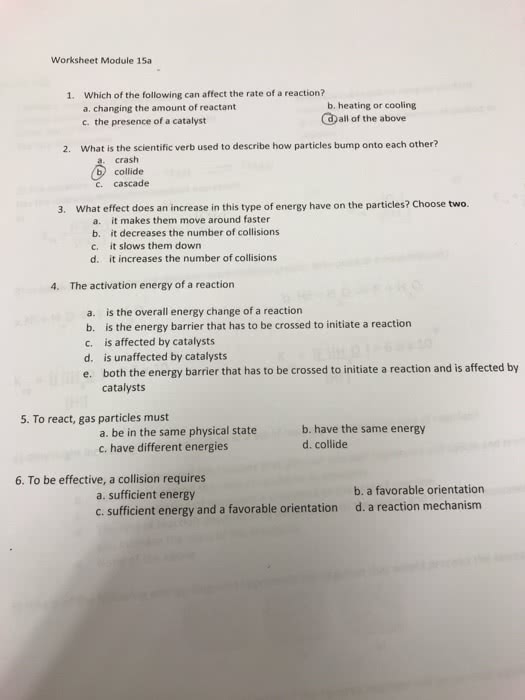CHEM 1R03 Lecture Notes - Lecture 24: Activated Complex, Collision Theory, Reaction Rate

Lecture Twenty-Four
Equilibrium: Collision Theory
•Kinetics is the study of the factors that effect the speed of a reaction and the
mechanism by which a reaction proceeds
•In order for a reaction to take place, the reacting molecules must collide with each
other
•Once molecules collide (collision to after) they may react with each other or they
may not (going back to before collision) depending on two factors:
•The first factor looks at whether the collision has enough energy to break the bonds
holding reactant molecules together
•The second factor is looking at whether the reacting molecules collide in the proper
orientation for new bonds to form
•Collisions in which these two conditions are met (and the reaction occurs) are
effective collisions
•The higher the frequency of effective collisions the faster the reaction rate
•When two molecules have an effective collision, a temporary, high energy
(unstable) chemical species is formed which is called activated complex
•Remember this is not a true molecule because it is between reactants and the
product with partial, incomplete bonds
•The activated complex is the difference in energy between the reactant and the
activated complex (Ea)
•The larger the activation energy, the slower the reaction rate


